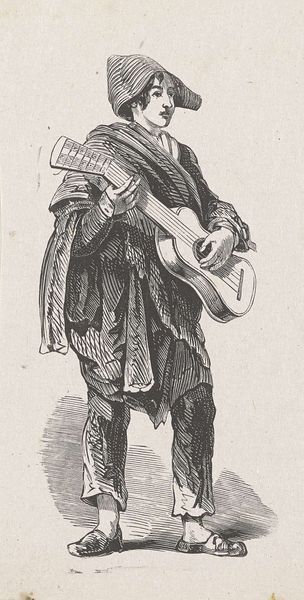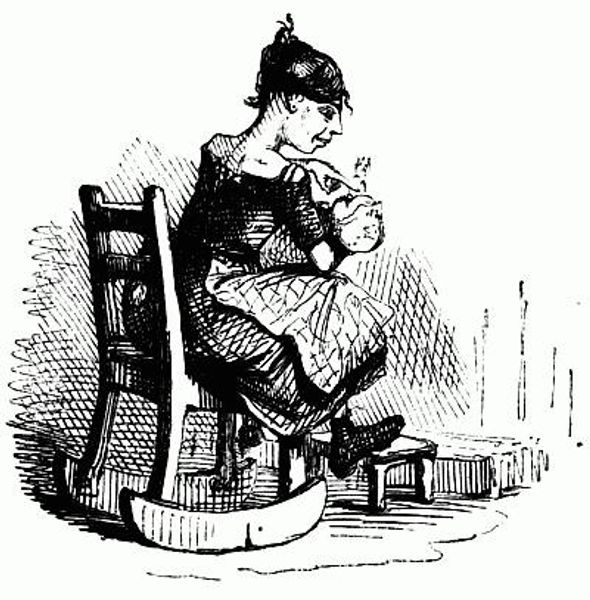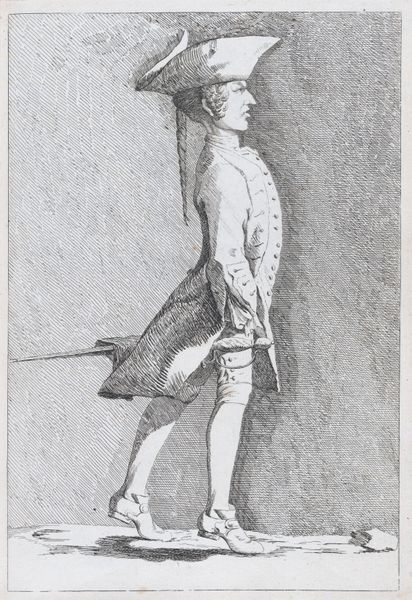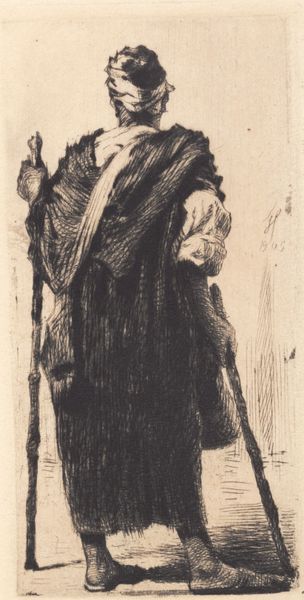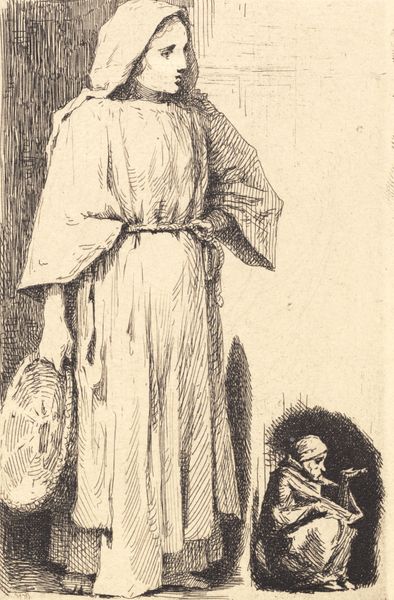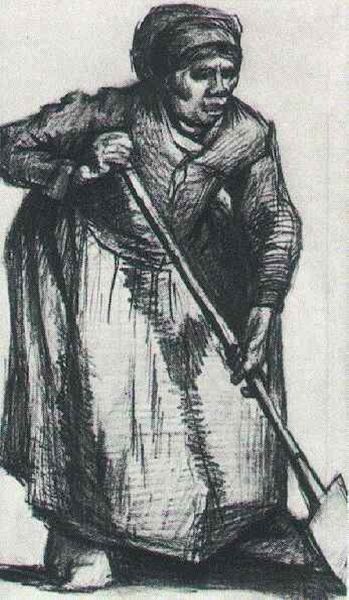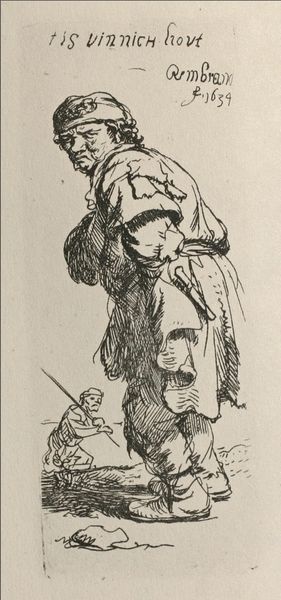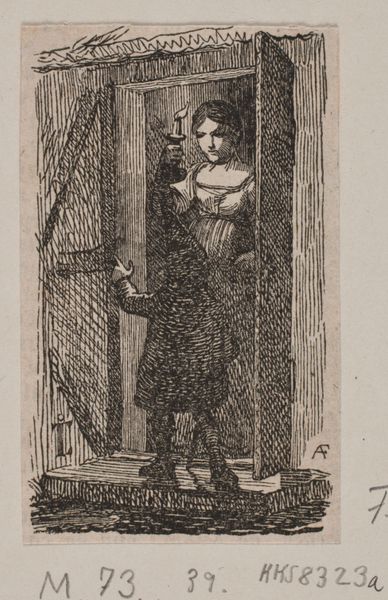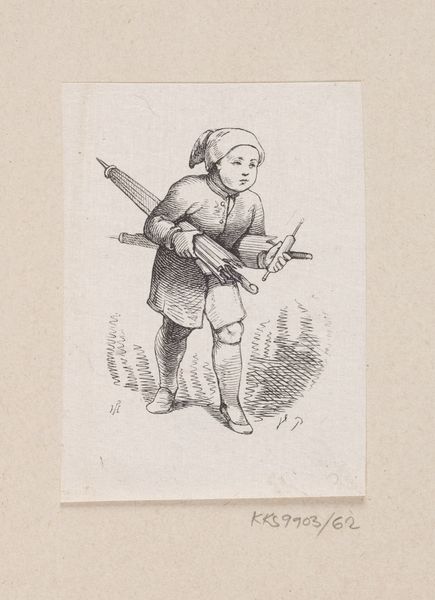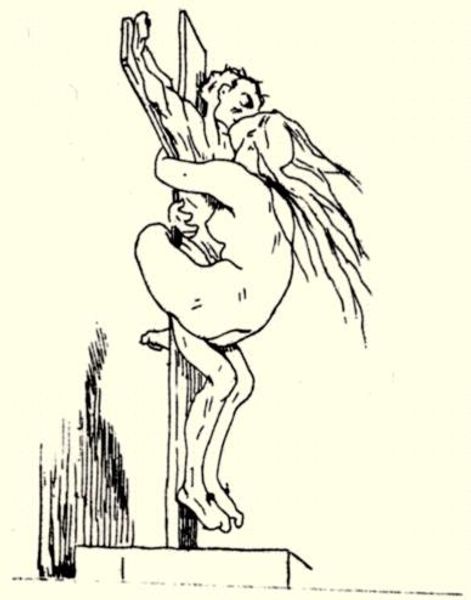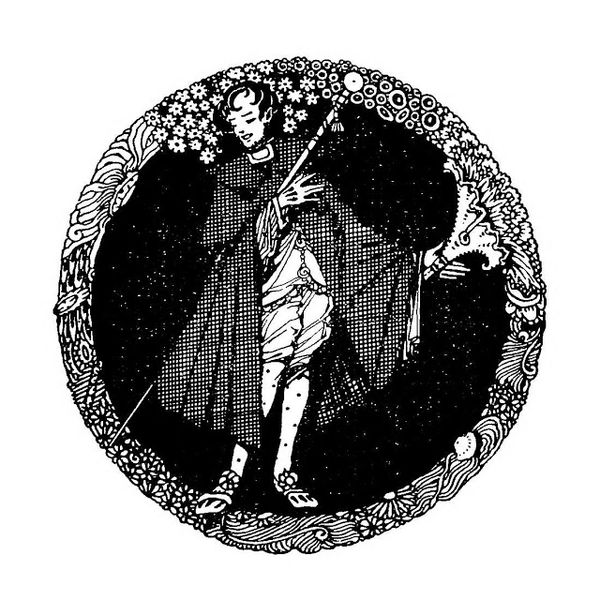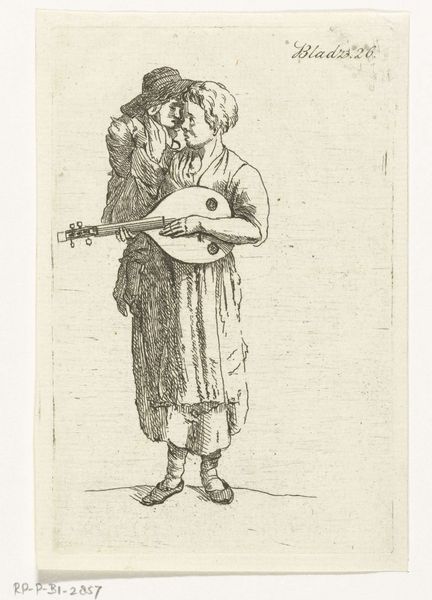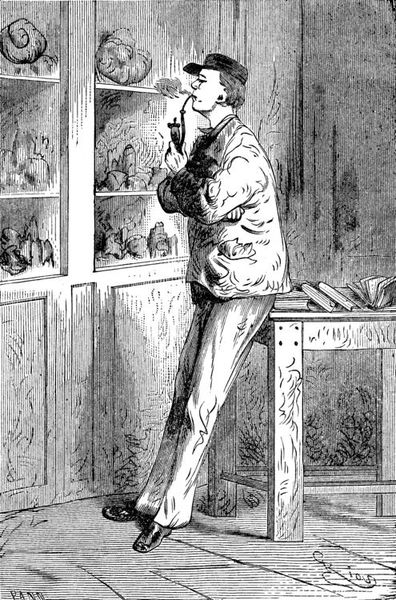
Copyright: Public domain
Curator: Here we see Paul Gavarni's "Antonia's Song", a pen drawing completed around 1861. What strikes you initially about it? Editor: There's a certain melancholic air, isn't there? The subject's downward gaze, the spareness of the line work – it all contributes to a feeling of quiet introspection. I notice how the line varies, sometimes dense and cross-hatched, and other times thin and attenuated almost to the point of breaking. Curator: The figure indeed exudes melancholy. Gavarni, known for his social commentary, frequently depicted musicians as figures on the margins of Parisian society, hinting at emotional complexities through seemingly simple subjects. The violin, a symbol deeply tied to emotional expression throughout history, resonates here with deeper psychological weight. Think of its prevalence in depictions of mourning, celebrations, and even the diabolical. Editor: Yes, the violin in art can carry such loaded symbolism, and yet the way Gavarni's drawn it almost feels… spectral? The barely-there rendering of the instrument in the background contributes to this ethereal feel. It seems the composer exists only partially, on the edge of visibility. Curator: Absolutely. The figure seems lost in contemplation, and the instrument becomes an extension of their inner state, resonating perhaps with unfulfilled longing or perhaps the transient nature of artistic expression itself. Editor: Speaking purely from a structural viewpoint, there’s an intriguing contrast at play, between the relatively well-defined face and upper body against the looser, more fragmented lines describing the drapery of the cloak and, indeed, the aforementioned background. Curator: He presents us with an interplay between form and dissolution, and as the artist, Gavarni, invites us to contemplate the ephemeral qualities of existence through this deceptively simple rendering of Antonia’s song. Editor: It certainly reveals layers upon closer examination, and shifts the interpretation beyond merely capturing a scene. It opens us up to questioning how such understated artistic means could create such depths.
Comments
No comments
Be the first to comment and join the conversation on the ultimate creative platform.
